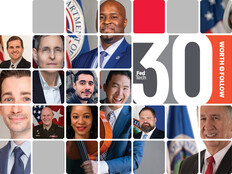Embracing the Power of Big Data Correlation in Government
There is a 94 percent correlation between the amount of cheese the average person eats and the number of people who die each year tangled in their bedsheets.
The lesson here? Correlation is not the same as causation. It's an important lesson for agencies to learn as Big Data makes a greater impact on both daily life and the business world.
“We’re entering an era where almost every object records data,” said Mike Walsh, CEO of innovation consultancy Tomorrow, speaking at the 2015 Management of Change conference in Cambridge, Md. “The key is finding what amount of data is truly important, and using it in ways that will empower leaders in our organizations to facilitate change.”
For example, Walsh said government leaders in Brazil used real-time Big Data to track the location of civic responders — fireman, police officers, ambulances — and could move them around the city based on incidents as they unfolded.
That type of analytics, he said, can make a difference to organizations in both the public and private sector.
Walsh told the story of a Chinese washing machine manufacturer. Members of a small farming town purchased one of the manufacturer’s units, but it quickly broke down, and the owner called the company for service. Because the machine was located in a farming town, the repairman expected that dirt had clogged its filter. Turns out he was right, but not for the reasons he believed.
“Instead of dirt from filthy clothes, it came from potatoes,” Walsh said. “The residents were washing their vegetables in the machine. While this may seem odd, the company saw opportunity. They made a line of washing machines that could handle the dirt from vegetables.”
The lesson, Walsh said, is that data comes in all shapes and sizes — and sometimes unexpected places — but if it presents an opportunity, it should not be ignored. He said organizations, especially those working in government, should study their customers as an anthropologist would: Find out what they really need, instead of trying to tell them what they want.
“Real innovation is what you find in the field, not in the lab,” Walsh said. “Take your employees out of their comfort zone and into spaces consistent with your customer’s challenges.”
To make his point, Walsh highlighted another case in China. A company named Shanzhai designs and sells cellphones that most Americans would consider absurd: phones made of wood, for example, or that look like a pack of cigarettes. But these are phones the Chinese people want.
The company develops about a dozen different phones a month and sticks with the ones that sell best. The rest are discarded. The company also includes unusual apps that customers ask for, such as a universal remote control able to turn off a loud television in a restaurant.
“It came down to customer wants,” Walsh said. “There are all kinds of data out there, but only a small part of it is actionable. You have to listen to people to find that. It’s not market research, focus groups or spreadsheets, its finding what the people really want — no matter how odd it may seem at first. If it’s a problem you can solve, then it’s an opportunity.”








